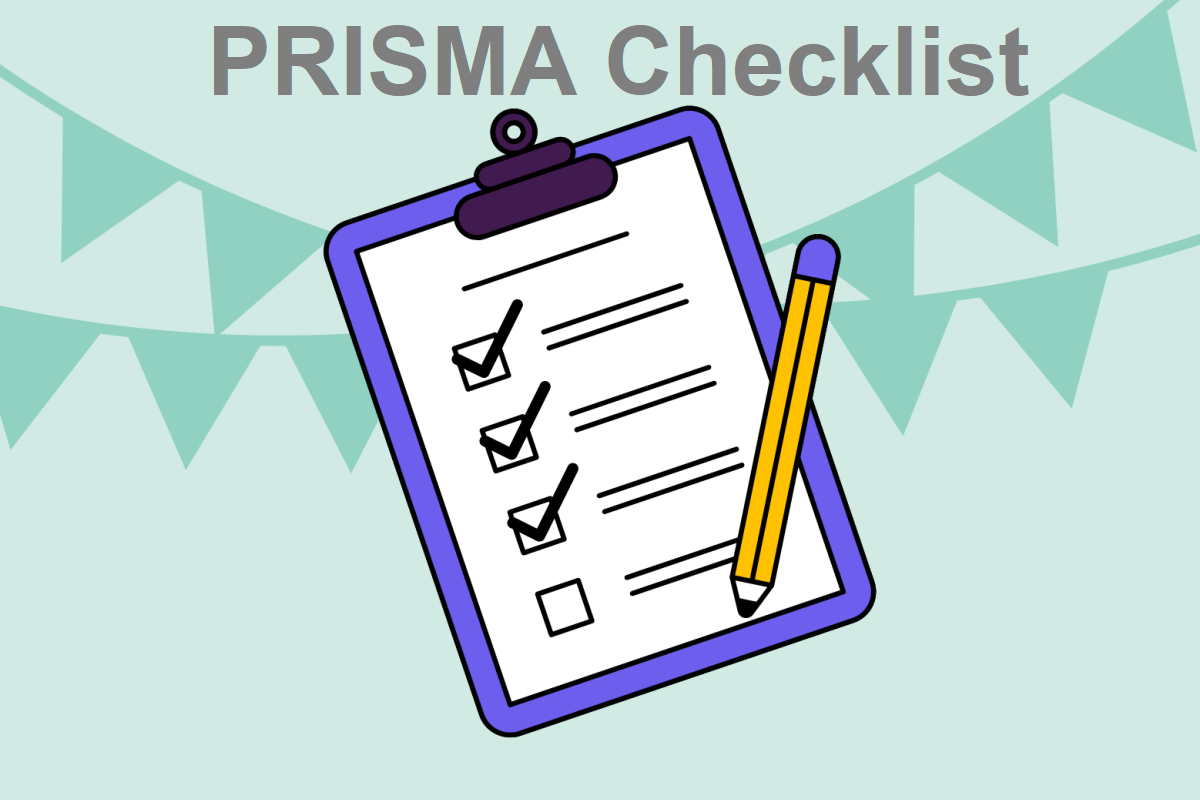The PRISMA Statement (Preferred Reporting Items for Systematic Reviews and Meta-Analyses) is an essential set of guidelines designed to enhance the quality, transparency, and consistency of systematic reviews and meta-analyses.
Developed to address the need for clear and comprehensive reporting, PRISMA helps researchers, reviewers, and readers ensure that systematic reviews are conducted and reported with rigor. Here’s a detailed overview of PRISMA and its application:
Purpose and Importance of PRISMA
-
Enhancing Transparency:
- Complete Reporting: PRISMA provides a checklist of items that must be reported to offer a complete picture of the systematic review process. This transparency helps readers understand the methodology and findings, reducing ambiguity.
- Consistency Across Studies: By standardizing reporting practices, PRISMA facilitates the comparison and evaluation of systematic reviews, helping ensure consistency in the presentation of evidence.
-
Improving Review Quality:
- Rigorous Methodology: PRISMA emphasizes methodological rigor, ensuring that reviews adhere to high standards of research practice. This includes comprehensive literature searches, clear inclusion/exclusion criteria, and detailed data synthesis.
- Reduction of Bias: By requiring detailed documentation of methods and findings, PRISMA helps minimize biases in the review process, leading to more reliable and valid conclusions.
-
Facilitating Reproducibility:
- Detailed Reporting: The guidelines ensure that sufficient detail is provided about the review process, allowing others to replicate the study or build upon it. This reproducibility is crucial for verifying findings and advancing research.
Key Components of the PRISMA Statement
The PRISMA Statement includes a 27-item checklist and a flow diagram that cover various aspects of systematic review reporting:
-
Title and Abstract:
- Title: The title should clearly indicate that the report is a systematic review or meta-analysis, providing a concise summary of the focus and scope.
- Abstract: The abstract must be structured to include the review’s objectives, methods, results, and conclusions. It provides a summary of the review for quick understanding.
-
Introduction:
- Rationale: Explain why the systematic review is needed and the problem it addresses. This section justifies the review and provides context for the research question.
- Objectives: Clearly state the primary and secondary objectives of the review. This helps define the scope and focus of the review.
-
Methods:
- Eligibility Criteria: Describe the criteria used to include or exclude studies. This should cover aspects such as study design, population, interventions, and outcomes.
- Information Sources: List all databases and sources searched for relevant studies. Include details on the time frame and any other sources like grey literature or reference lists.
- Search Strategy: Provide a detailed account of the search strategy, including the search terms, Boolean operators, and any filters used.
- Study Selection: Detail the process for screening and selecting studies, including the number of reviewers and how disagreements were resolved.
- Data Extraction: Explain how data was extracted from included studies, including the use of standardized forms and any tools used for data extraction.
- Risk of Bias: Outline the methods used to assess the risk of bias in individual studies. This includes tools or criteria used to evaluate study quality.
- Data Synthesis: Describe the methods for combining and analyzing data from the included studies. This can involve statistical techniques for meta-analysis or narrative synthesis.
-
Results:
- Study Selection: Present the number of studies screened, included, and excluded, using the PRISMA flow diagram to illustrate the process.
- Study Characteristics: Provide a summary of the characteristics of the included studies, such as sample size, study design, and key findings.
- Synthesis of Results: Report the main findings of the review, including quantitative results from meta-analysis or qualitative summaries. Present data on the effectiveness or impact of the interventions or exposures.
-
Discussion:
- Summary of Evidence: Summarize the main findings of the review, their implications, and how they address the research question.
- Limitations: Discuss the limitations of the review and the included studies, such as potential biases, methodological weaknesses, and limitations in the evidence base.
- Conclusions: Provide conclusions based on the evidence and suggest recommendations for practice, policy, or future research.
-
Funding and Conflicts of Interest:
- Funding: Disclose any sources of funding for the review and the role of the funders in the research process.
- Conflicts of Interest: Declare any potential conflicts of interest among the authors, which could influence the review's findings.
Procedure for Using PRISMA
-
Obtain PRISMA Resources:
- Access PRISMA: Visit the PRISMA website here to download the checklist and flow diagram. Ensure you have the most current version of these resources.
-
Apply the Guidelines:
- Follow the Checklist: Use the PRISMA checklist to ensure that all required items are addressed in your review report. This includes detailed reporting of methods, results, and conclusions.
- Use the Flow Diagram: Employ the PRISMA flow diagram to visually represent the study selection process, showing the number of studies included and excluded at each stage.
-
Draft and Revise:
- Write the Report: Draft your systematic review following the PRISMA guidelines, ensuring that all components are covered comprehensively.
- Revise: Revise the report based on feedback from co-authors or reviewers and ensure adherence to PRISMA standards.
-
Submit for Publication:
- Journal Submission: When submitting your review to a journal, confirm that it meets any additional reporting requirements set by the journal. Many journals require adherence to PRISMA guidelines.
By adhering to the PRISMA Statement, researchers can produce systematic reviews and meta-analyses that are well-structured, transparent, and reliable, contributing to the advancement of evidence-based practice and policy.





